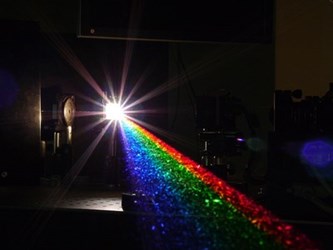New Graphene Lasers Show Potential For Surgery And Spectroscopy

Graphene Flagship scientists have developed a graphene-based optical fiber laser capable of emitting ultrashort pulses using only a few wave lengths of light, which could prove useful in biomedical applications. Ultrafast spectroscopy would allow for greater image resolution than has ever been achieved, and surgical lasers using shorter pulses could reduce heat damage to living tissue.
The theoretical premise of graphene has been bandied about by researchers for the last one hundred years, but it’s only with recent technological advances that the true promise of the material is starting to manifest. Graphene is made entirely out of carbon, essentially a one-atom thick slice of diamond, which is incredibly strong, flexible, and conductive of both heat and electricity.
Researchers are currently investigating graphene’s potential use in computer chips, bio-inks, water filtration systems and miniaturized sensors. Recent research has turned its attentions towards graphene-based lasers.
In 2013, Byung Hee Hong, a physicist at Seoul National University, told Nature that graphene could add versatility and strength to ultrashort pulse lasers. According to Hong, these devices can be small, which makes them easier to use and more versatile. Also, the chemical and mechanical properties of the graphene could prevent the thermal damage common with intense laser beams.
Though several research teams have developed graphene-based lasers, scientists working as part of the European Union’s Graphene Flagship initiative have developed a laser that is entirely fiber based, making the setup simpler and more compact.
“Fiber lasers are attractive platforms for ultrashort pulse generation, owing to their simple, compact and cost-effective designs, their efficient heat dissipation, and an alignment-free operation that does not require bulky optical setups,” said researchers in a Graphene Flagship press release.
According to Carlo Antoncini at the University of Reading, “The ultrashort pulse duration allows for fast temporal resolution, in similar way that a strobe light appears to freeze the motion of people. A mode-locked laser is able to do the same with objects such as molecules.” The faster the pulse, said Antoncini in his article, the greater the spatial resolution.
Antoncini defined “ultrashort” as a few picoseconds long, but Daniel Popa’s team at the Cambridge Graphene Centre, which published its findings in Applied Physics Letters, said that its graphene laser was able to generate 29 femtosecond pulses, or .029 picosecond with 52mW average power.
Popa remarked that his team was surprised how easy it was to combine graphene with “off-the-shelf” optical fibers and how simple and robust the setup proved to be. The team speculates that the technology could be revolutionary for next-generation biomedical innovations in spectroscopy and laser surgery.
Graphene Flagship is coordinated at Chalmers University of Technology in Sweden and boasts a $1.1 billion budget, making it the largest research initiative in European history. Its goal is to get graphene out of the laboratory and into the European marketplace within the next ten years.
